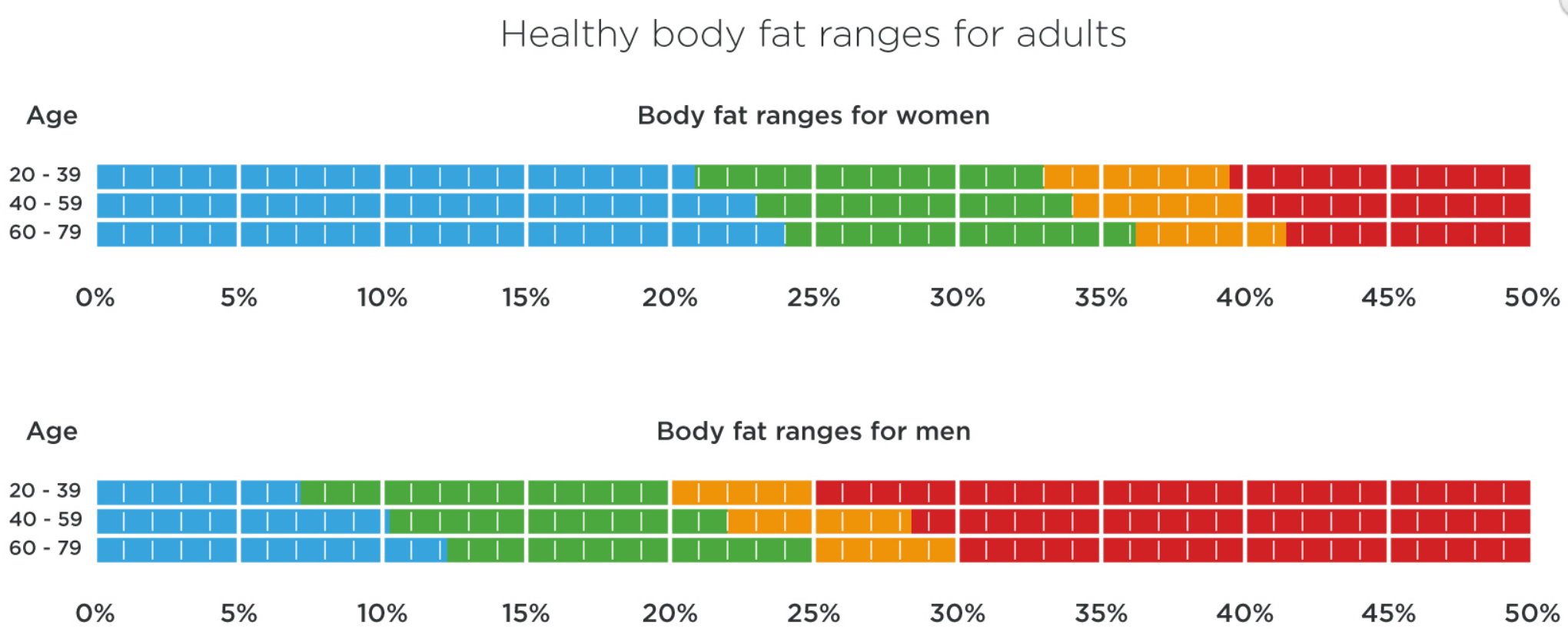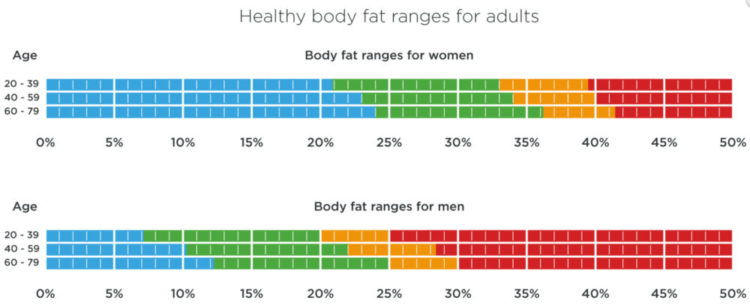Know Your Body Fat: Total Row Explains Why it Matters
What is Body Fat?
Reducing body fat is one of the most popular topics in health and fitness. Almost universally, people want less fat in their body than they currently have.
However, not everything about fat is bad. Body Fat is an essential part of your body composition. It is critical for maintaining body temperature, cushioning joints, storing energy, and protecting internal organs. Yes – your body does require fat.
While fat is necessary, too much or too little fat is unhealthy. Fat levels outside of normal ranges can damage your health in a number of ways: high blood pressure, heart disease, type 2 diabetes, and even certain cancers, to name only a few. Too little fat is also a problem: low energy, osteoporosis, and possible infertility in women.
Where Does Body Fat Come From?
Whether eating, sleeping, exercising (like rowing!), or just being alive, your body needs energy.
We get energy from what we eat and drink, commonly referred to as “calories.” A calorie is a unit of measure for the amount of heat needed to raise the temperature of one gram of water by one degree Celsius. Related to energy for our body, these calories provide the heat (energy) so that our bodies can function. Importantly, our bodies have the ability to store unused calories for fuel later.
Depending on a variety of factors such as age, weight, genetics, muscle mass, and activity level, your body will require a set number of calories/energy. If you consume the exact number of calories your body requires, everything you eat and drink will be converted straight into energy – this is the perfect (yet highly unlikely) scenario.
If you consume more energy than you burn, your body will store these excess calories as fat. If this stored fat is not converted into energy later, it creates excess body fat.
How Much Fat Do I Need?
It is simply not possible to function at 0% fat, or anywhere close to that. So that begs the question – how much fat do I need?
The appropriate way to evaluate this level is body fat percentage. Your body fat percent is the proportion of body fat mass to total body mass. Body Fat Mass, a less important metric when viewed in isolation, is the actual weight of fat in your body.
In the following images, we show the recommended body fat percent ranges for both males and females. Looking at the ranges, blue is underfat, green is optimal, yellow is overfat, and red is obese.

There are a few important tidbits from the above graphs.
First, notice that the ranges are different between men and women. In general, women’s bodies can support slightly higher fat levels. This is primarily because women need more fat to reproduce. All else being equal, women can safely hold a slightly higher percentage of fat in their body.
Second, notice that healthy fat levels change with age. As we grow older, it is normal to hold slightly higher fat levels. In many cases, individuals will have less muscle, resulting in a higher mix of fat. It’s equally important to notice that the disparity by age is not huge.
And third, remember that there is an “underfat” category. The idea is to be in a healthy range – not 0%. Ever notice that some of the best athletes in the world may look a little “soft” at times? These athletes need fat, and are trying to maintain optimal performance levels. While minimal levels of fat are more visually appealing to some, it is not always that healthiest approach.
How Do I Know My Body Fat?
Now for the fun part! Understanding body fat requires an analysis of your body composition. There are a few accurate ways to accomplish this, but we will only discuss two here.
DEXA (Dual-energy X-ray Absorptiometry) Scan
This is the Gold standard of Body fat testing. In a DEXA scan, X-ray technology is used to estimate various aspects of your body composition, including tissue, muscle, fat, etc. DEXA scans are very accurate, but because they require X-ray technology, are expensive and hard to find. This way of testing body fat is out of reach for the majority of the population.
But fear not, there is another way!
BIA (Bioelectrical Impedance Analysis)
BIA is the method we use at Total Row. In BIA, a very low, safe electrical signal is sent through your feet to your legs, abdomen, and arms. As the electrical signal moves through your body, its speed varies according to different body materials (it passes quickly through water in hydrated muscle tissue, but meets resistance when it hits fat tissue).
At Total Row, we also use a segmental model, which provides extra readings for each leg, each arm, and the abdominal area. This method can help to highlight muscle imbalances and locations of primary fat storage.
The machine used at Total Row is manufactured by Tanita. Its machines are widely regarded as the most accurate in the industry, with only a small margin of error from the DEXA machine. Tanita monitors have been more extensively validated against alternative body composition techniques than any other brand of monitor on the market, and are widely used in hospitals, clinics, and research labs. In independent research studies, the Tanita BIA has been highlighted as the most clinically accurate compared to other products.
Not All Body Fat is Created Equal
When going through the results of your test, it is important to understand (1) how much fat you have, (2) your complete body composition, and (3) where your fat is located.
Determining how much fat you have is easy – this is the reading given by Body Fat Percentage. Once this reading is obtained, the chart above is used to determine the applicable range. This is a great starting point to begin establishing a plan of attack.
Looking at your complete body composition is also important. Do you have too much / too little fat? Do you have too much / too little muscle? Does the segmental analysis reveal a weakness in a specific spot? Just knowing your body fat percent isn’t enough. We need to dig into the “why,” before determining a proper course of action.
Finally, where your body fat resides is critical. One of the most important readings is Visceral Fat. Visceral Fat is fat surrounding organs, and is the most dangerous to your health. Even at low levels of body fat percentage, too much visceral fat can pose serious problems. While individual fat can’t be specifically targeted (unlike muscle), knowing that visceral fat is too high can help someone keep pushing fat levels lower even if they are in the “healthy” range.
Final Throughts
Body fat is not just related to your beach body. It is a critical component of your total health. At Total Row, our Tanita machines offer a comprehensive body analysis that can reveal both your strengths and weaknesses.
To learn more about this program, check out our complete tracking program. Sign up for an appointment today, and make sure to reach all of your goals!


